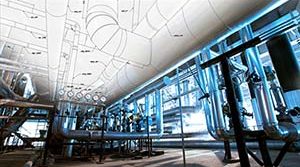Many piping groups in E&C firms are reviewing their strategies for combating corrosion in piping components. The history of Piping Technology & Products, Inc. has been strongly influenced by industry efforts to combat corrosion, which has always been a major problem at Gulf Coast U.S.A. petrochemical plants. The bolted design we developed for variable springs was originally justified as a quality improvement for hot dipped galvanized finish. This approach allows the spring to be assembled and calibrated with no welding after galvanizing. Prior to this PT&P innovation, the heat from welding could damage both the finish of the welded component and the neoprene coating of the spring coil inside the can. The thousands of springs we have supplied with hot dipped galvanized finish and neoprene-coated coils have proven the validity of this approach as the most cost-effective way to prevent corrosion.
Hot dip galvanizing is a unique process which develops a metallurgical bond of zinc-iron alloy between the zinc coating and the steel product it protects. It provides a continuous layer barrier which physically isolates the steel from the environment. Painting, on the other hand, is a barrier coating which is subject to damage from contact (scratching). Hot dip galvanizing provides a much longer life than painting in corrosive environments partly because zinc forms protective oxide and carbonate films which reduce the rate of corrosion dramatically. Steel exposed to the same environment will corrode at a rate of about twenty-five times the rate of zinc. Zinc also resists accelerated local corrosion even when its outer film has been broken or scratched. The actual rate varies with the electrolyte at the surface.
We provide various types of finishes for corrosion. Contact us for the right finish for your application.



